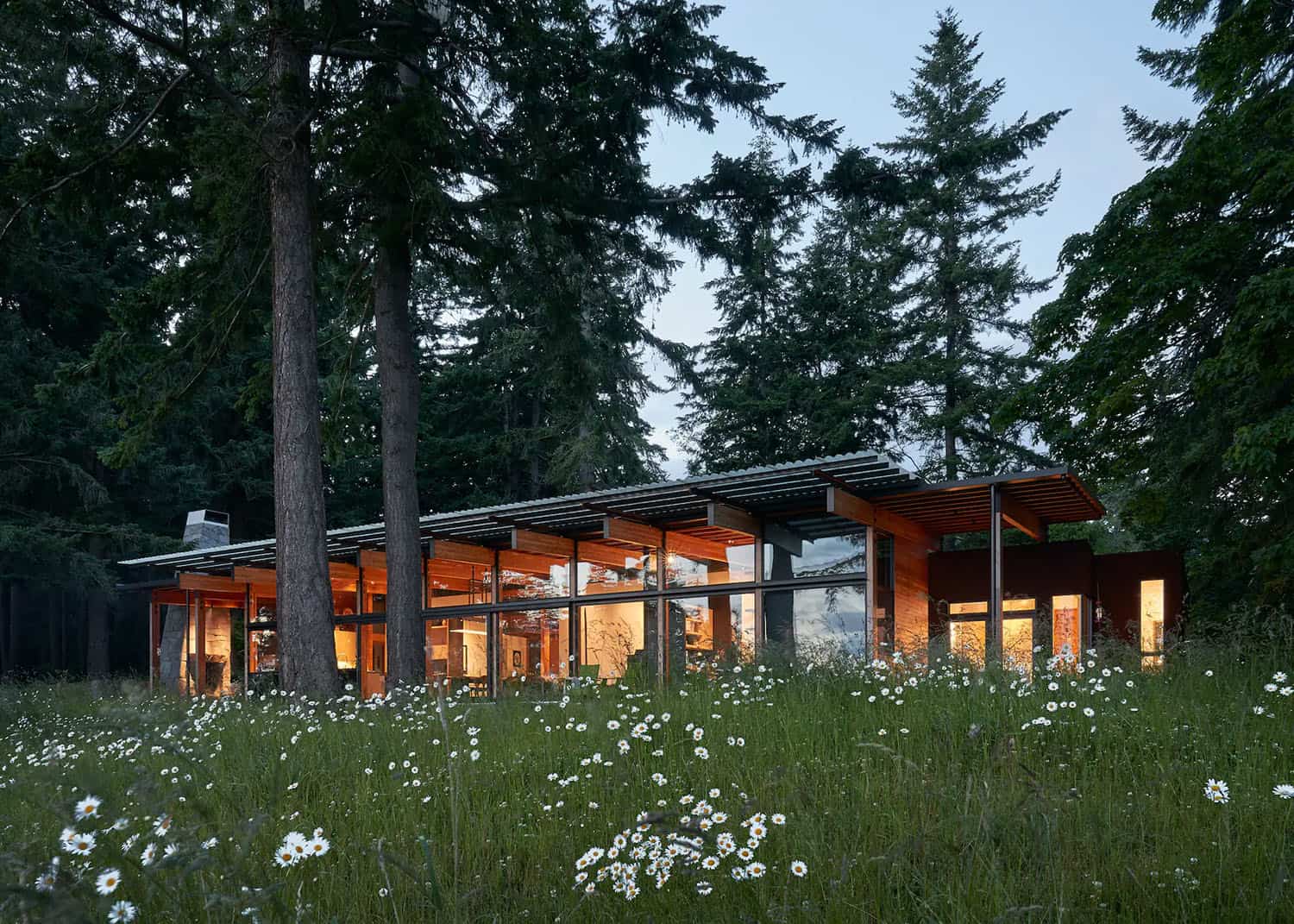
Miller Hull Partnership has designed this intimate retreat for indoor-outdoor living, nestled on a bluff on Whidbey Island, Washington. This picturesque property consists of a 2,300 square foot main house and a 560 square foot guest house that are set between wind-swept evergreens for an intimate setting.
The owners are a wildlife photographer and a blacksmith, desiring a retreat for two artists who live and work their passions. The main house is nestled several hundred yards from the bluff’s edge where a forest meets a meadow. Subtle grading, vegetated roofs and abstractly-arranged, steel-clad volumes on the north create the illusion of being embedded into the landscape.
Slim, carefully-placed windows within the volumes open to fern grottos, evergreen trees and the sound of frogs from the nearby wetland pond. On the south, a rectangular, open and expansive wood-framed pavilion overlooks Puget Sound. Inspired by indoor/outdoor living, covered porches extend on three sides creating usable space during the summer and shoulder seasons.
What We Love: This intimate retreat provides a welcoming respite to relax and unwind, surrounded by the beauty of nature. This home has an incredible indoor-outdoor living experience, encouraging its inhabitants to spend time enjoying the great outdoors. Living spaces are designed to be comfortable, casual and low-maintenance — ideal for a getaway home. We think this retreat would be an amazing escape in the woods to connect with nature and loved ones.
Tell Us: Would this be your idea of the ultimate island escape? Let us know why or why not in the Comments below!
Note: Be sure to check out a couple of other spectacular home tours that we have highlighted here on One Kindesign in Whidby Island: Glass house surrounded by a tranquil forest setting on Whidbey Island and Old barn on Whidbey Island converted into stunning home for entertaining.
SUSTAINABLE FEATURES:
The main house and guest house of this intimate retreat utilize materials that are Red List free and low in heavy metals. Utilizing a simple materials palette, materials like weather-exposed finishes are low maintenance and intended to patina with age. Decking, wood paneling, wood sills, wood counters, steel bolts and bridge washers were reclaimed and reused from an old family home. Where reclaimed materials were not available, materials were sustainably harvested and sourced locally. All wood paneling was finished with low- to no-VOC pigmented sealers and the insulation consisting of ecobatt and cellulose.
Thoughtful siting of the home and the guest house yielded minimal impact to the habitat. While the guest house exemplifies passive strategies with thick concrete walls sunken into the earth, the main house consists of large windows and skylights to provide balanced daylight with hydronic radiant floors. A 9.02 kW ground-mounted photovoltaic array sits out in the meadow, while rainwater is harvested from the pavilion roof and rain garden and stored in 8,000-gallon cisterns before being pumped into a filtration system located in the garage.
While the main house is located on the seam between the forest and the meadow, the guest house is settled deep into the trees. Submerged into the landscape, the simple, concrete structure is virtually unseen from passersby on the road.
The green roof and berm are covered with native grasses and ferns, creating habitat for the abundant wildlife. The light, wood interior creates a feeling of spaciousness, despite the small footprint. Hidden on the northside, a small sauna and outdoor shower supports the owners’ daily sauna ritual.
PHOTOGRAPHER Kevin Scott

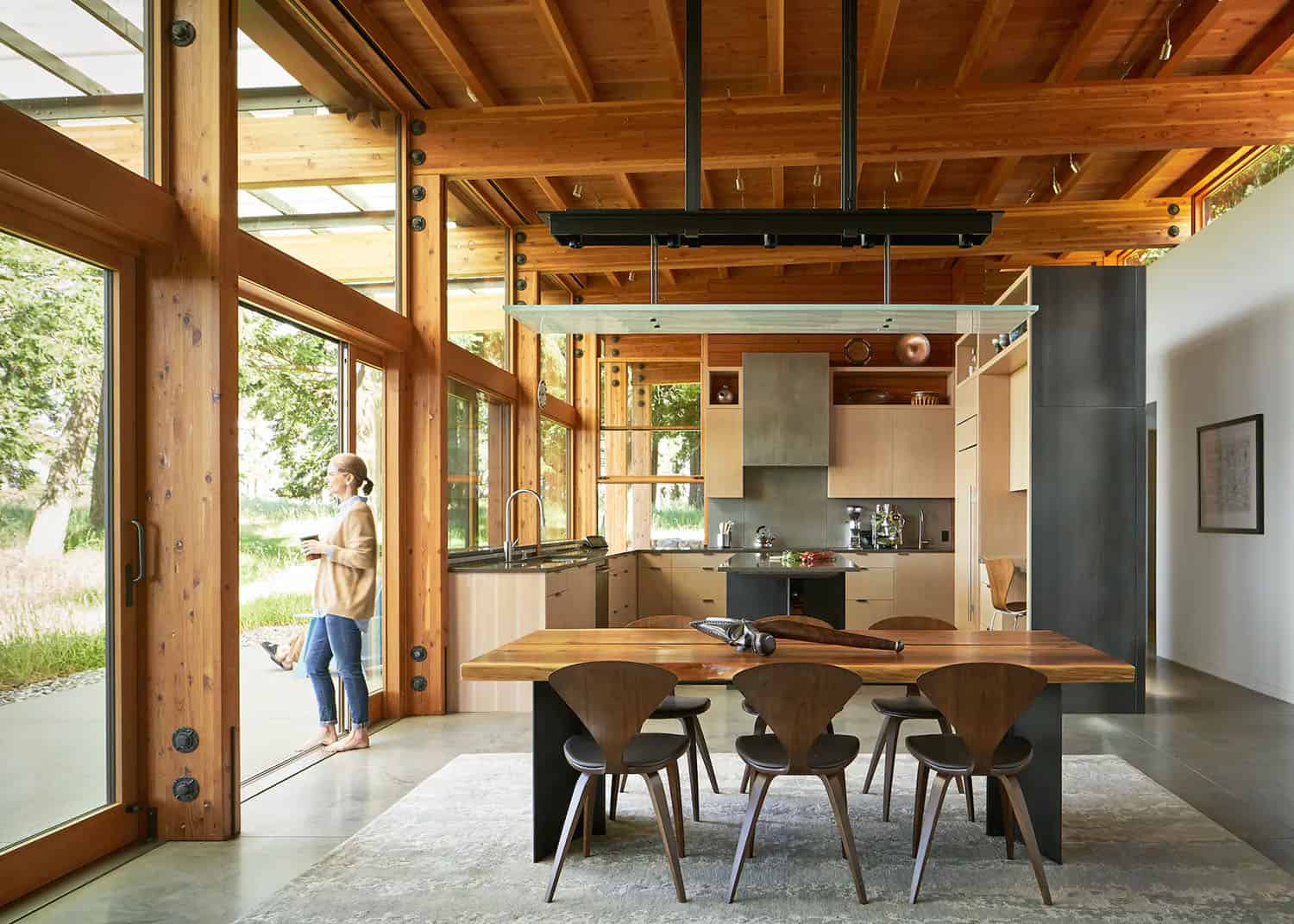
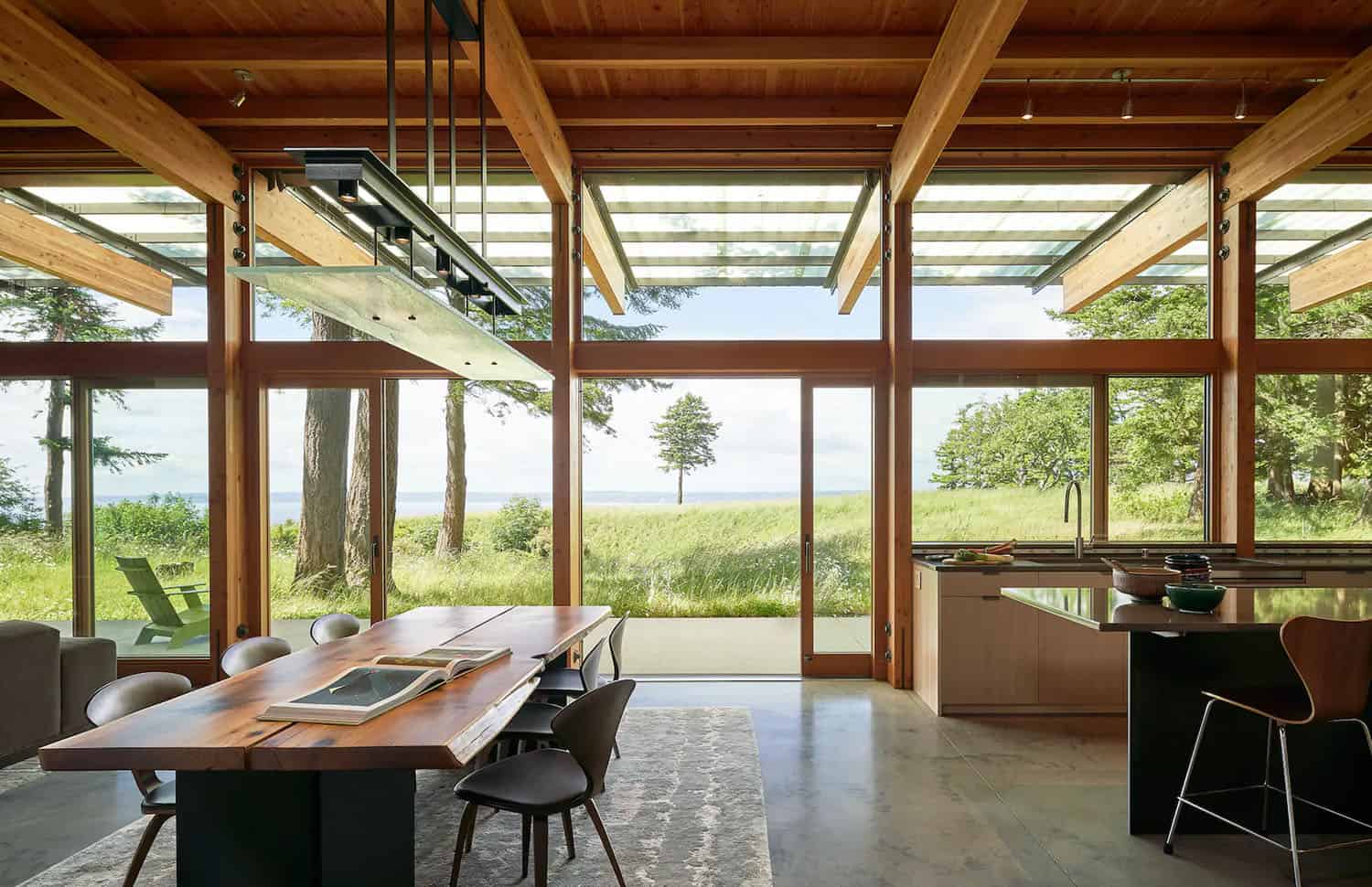
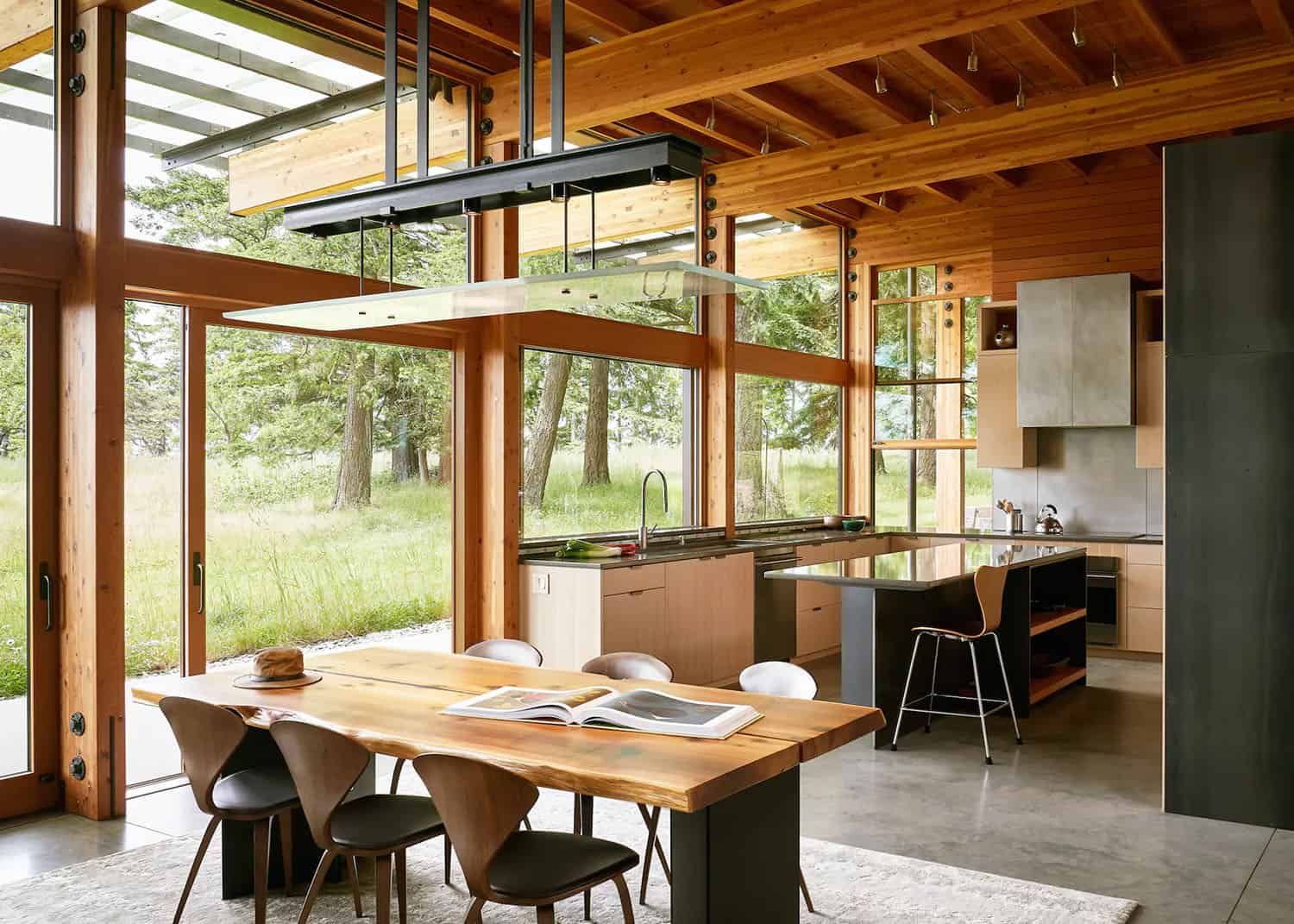
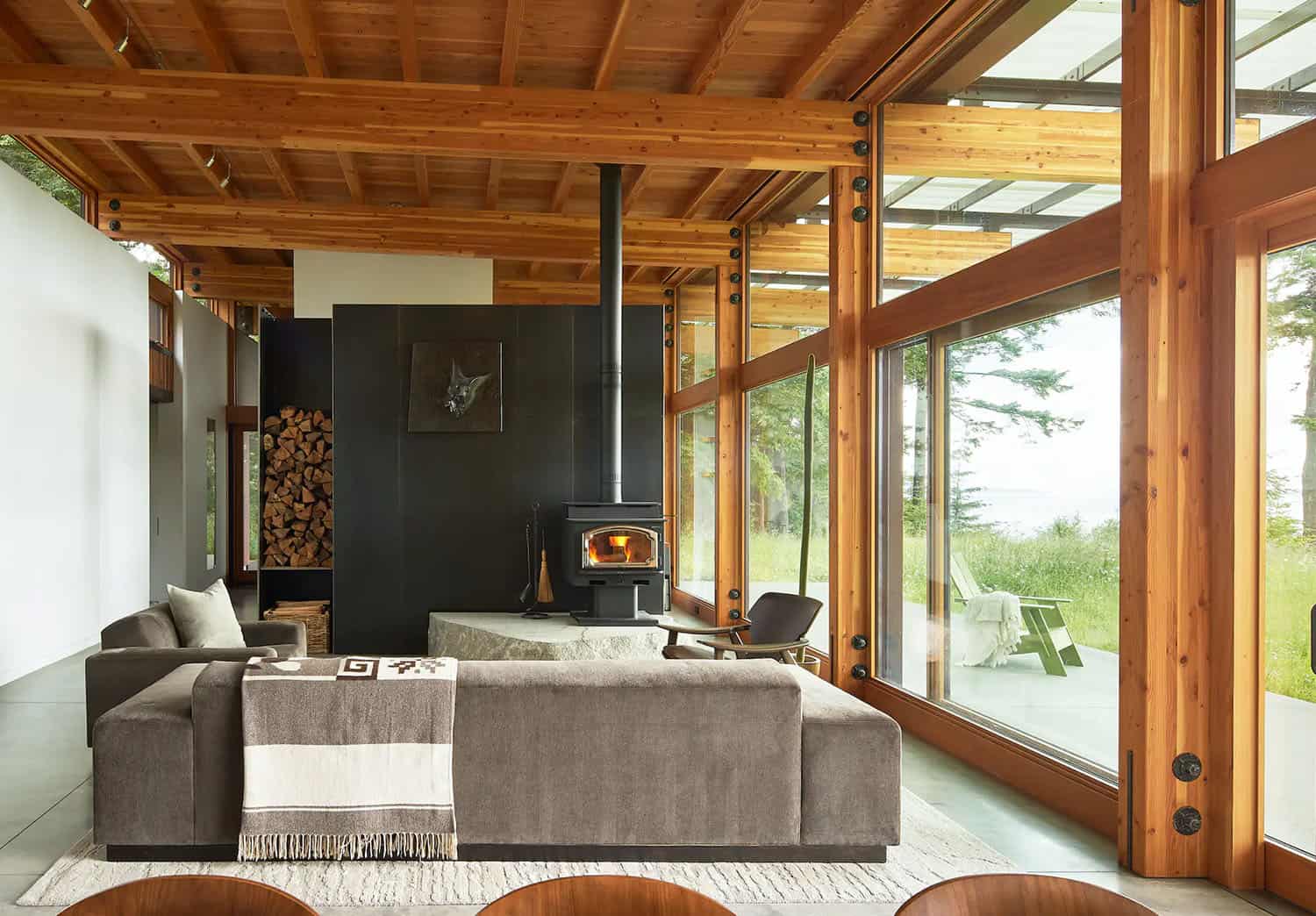
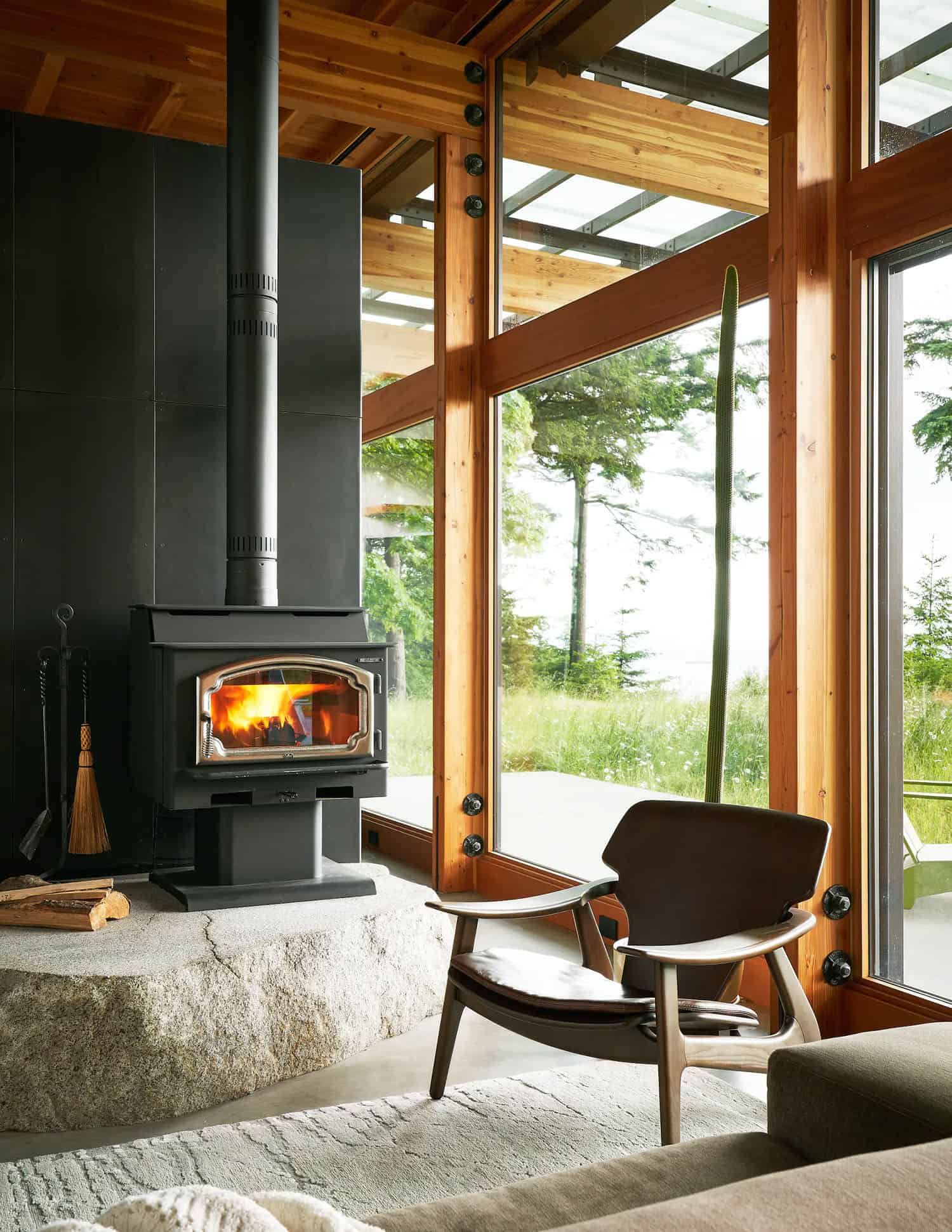



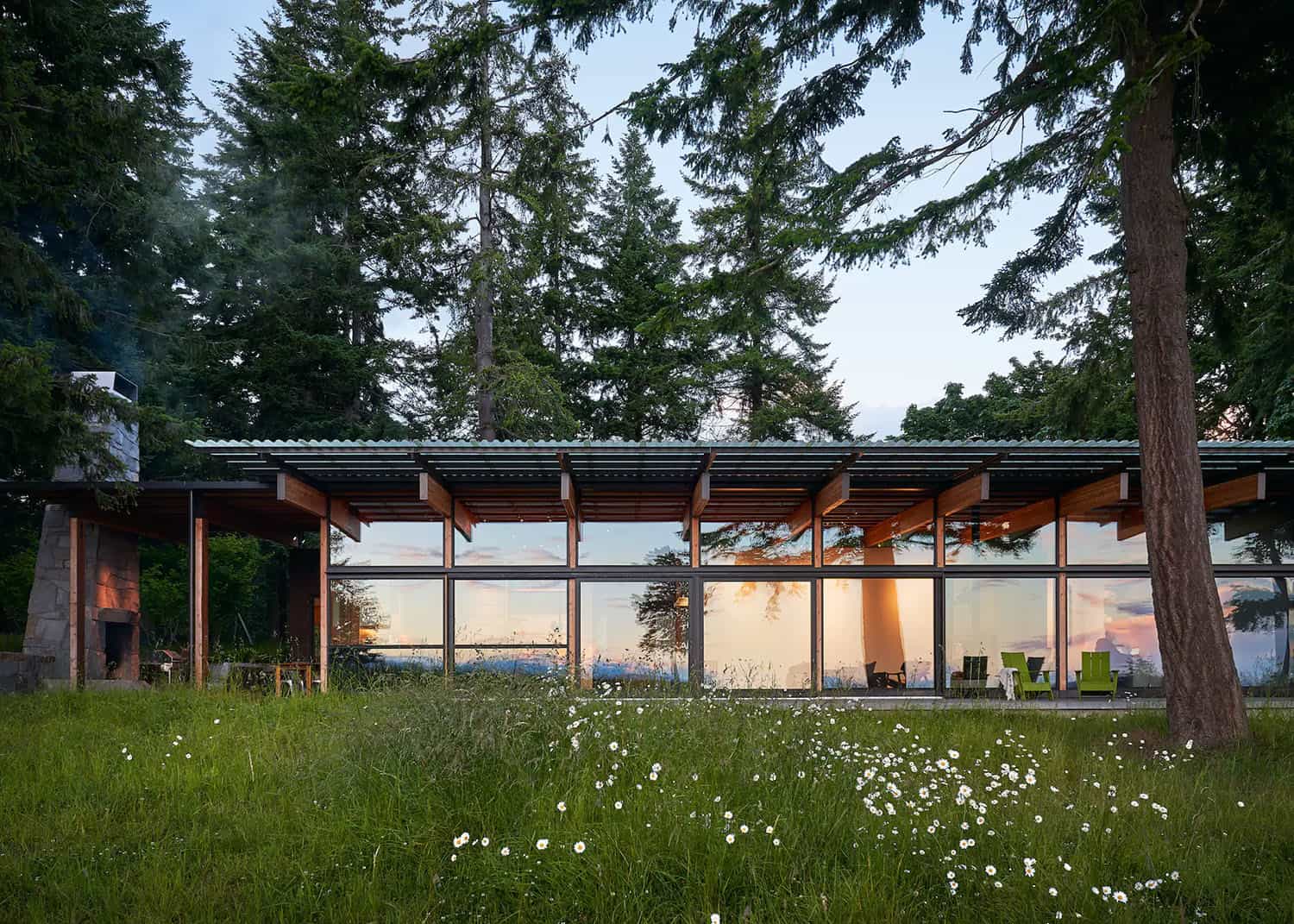
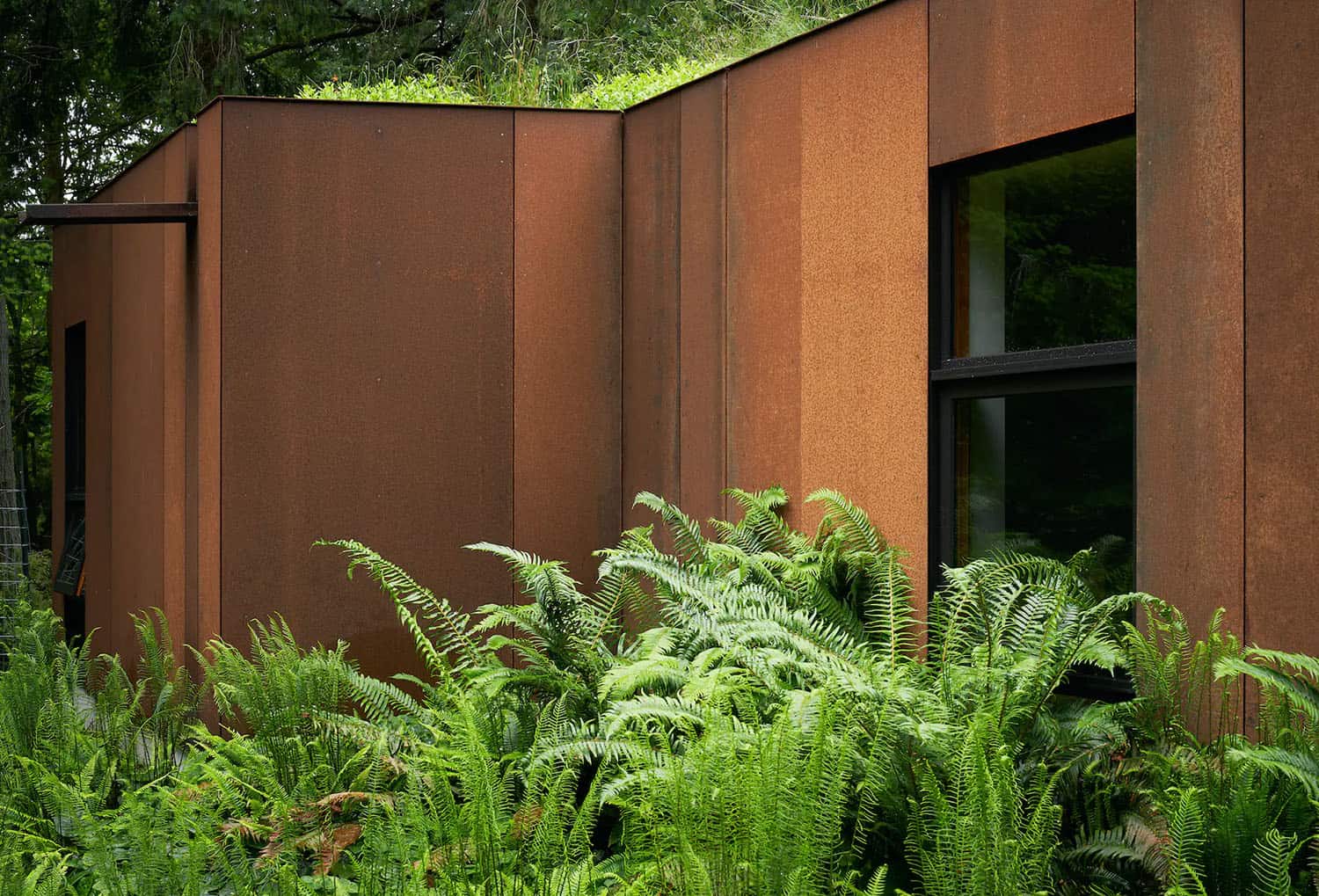
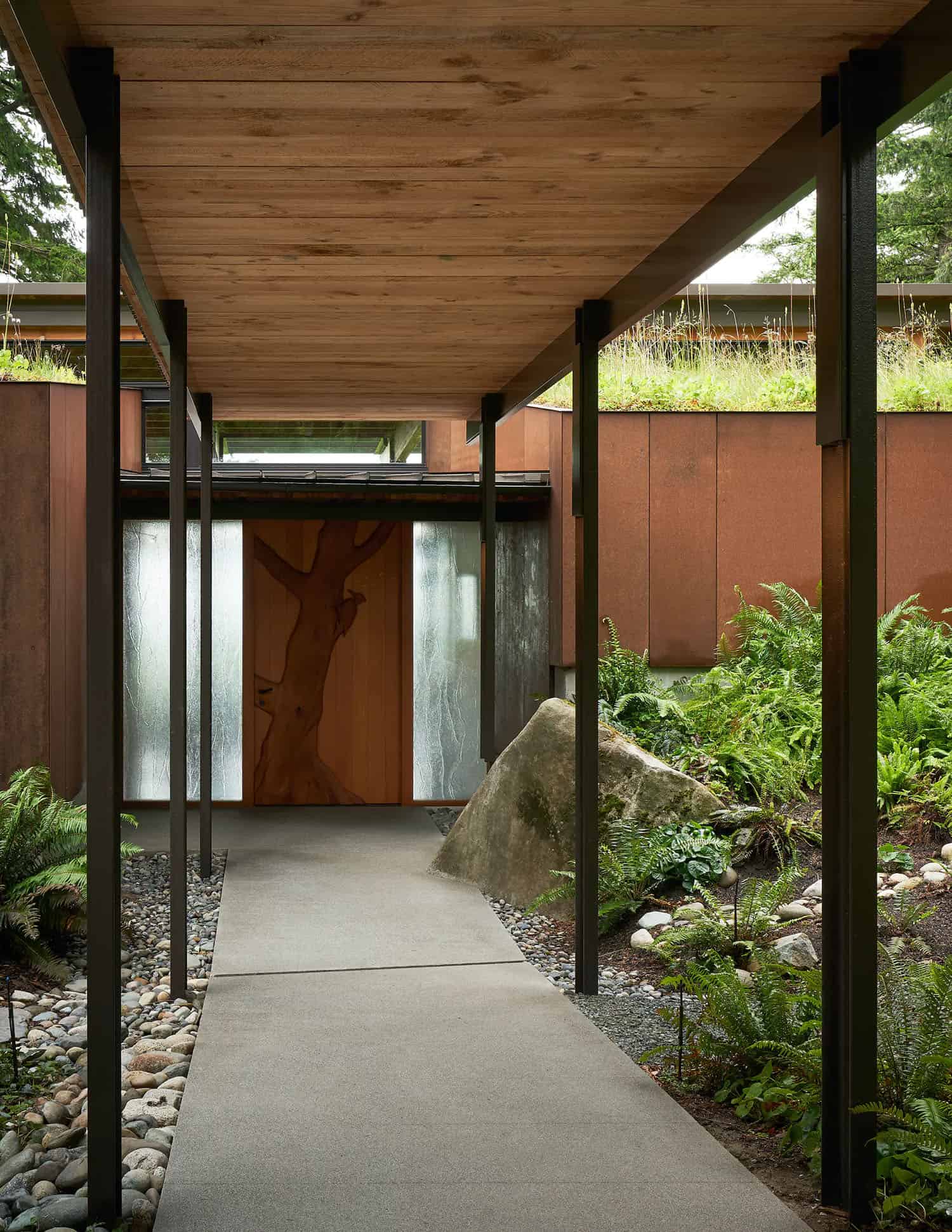
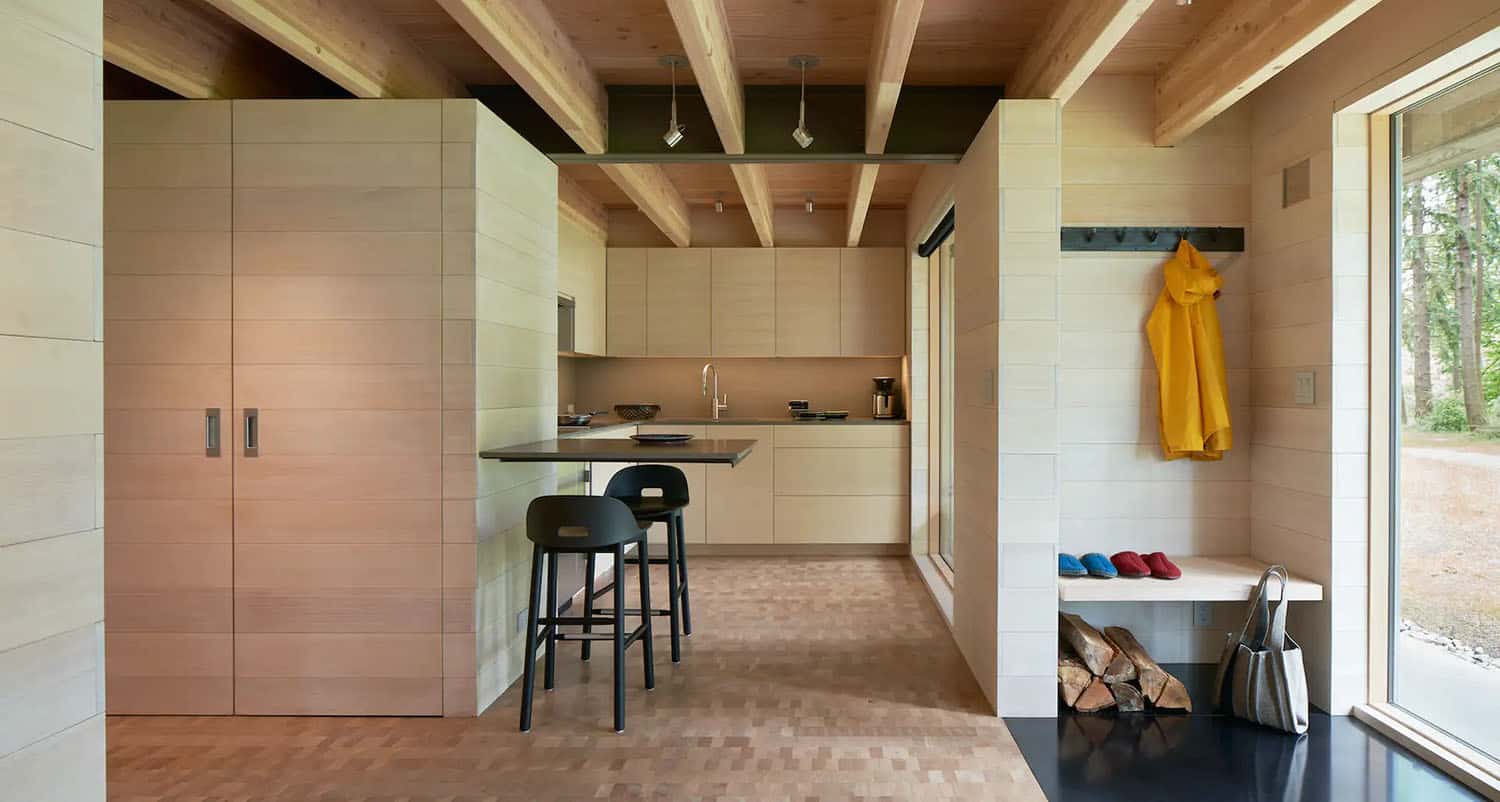
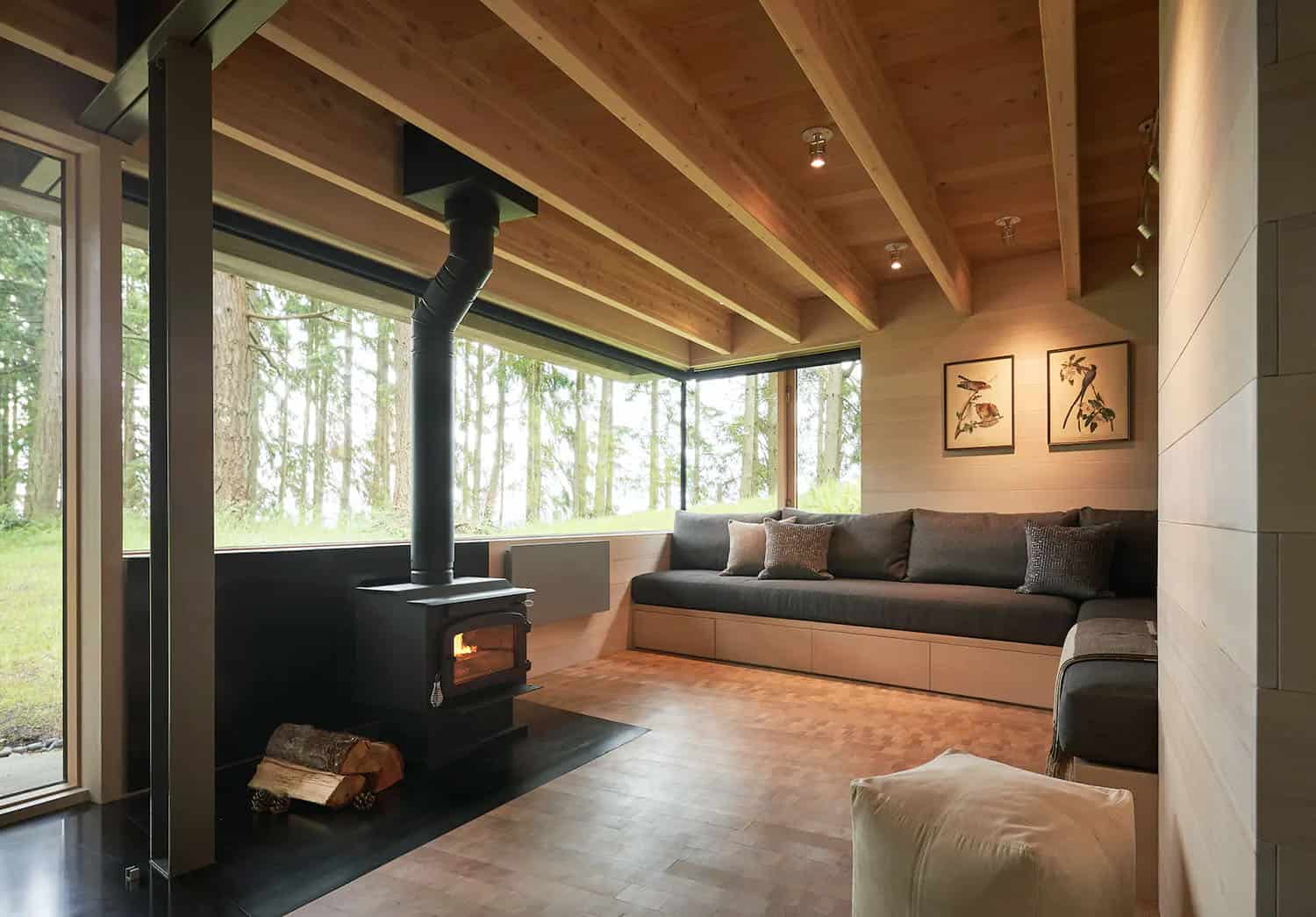
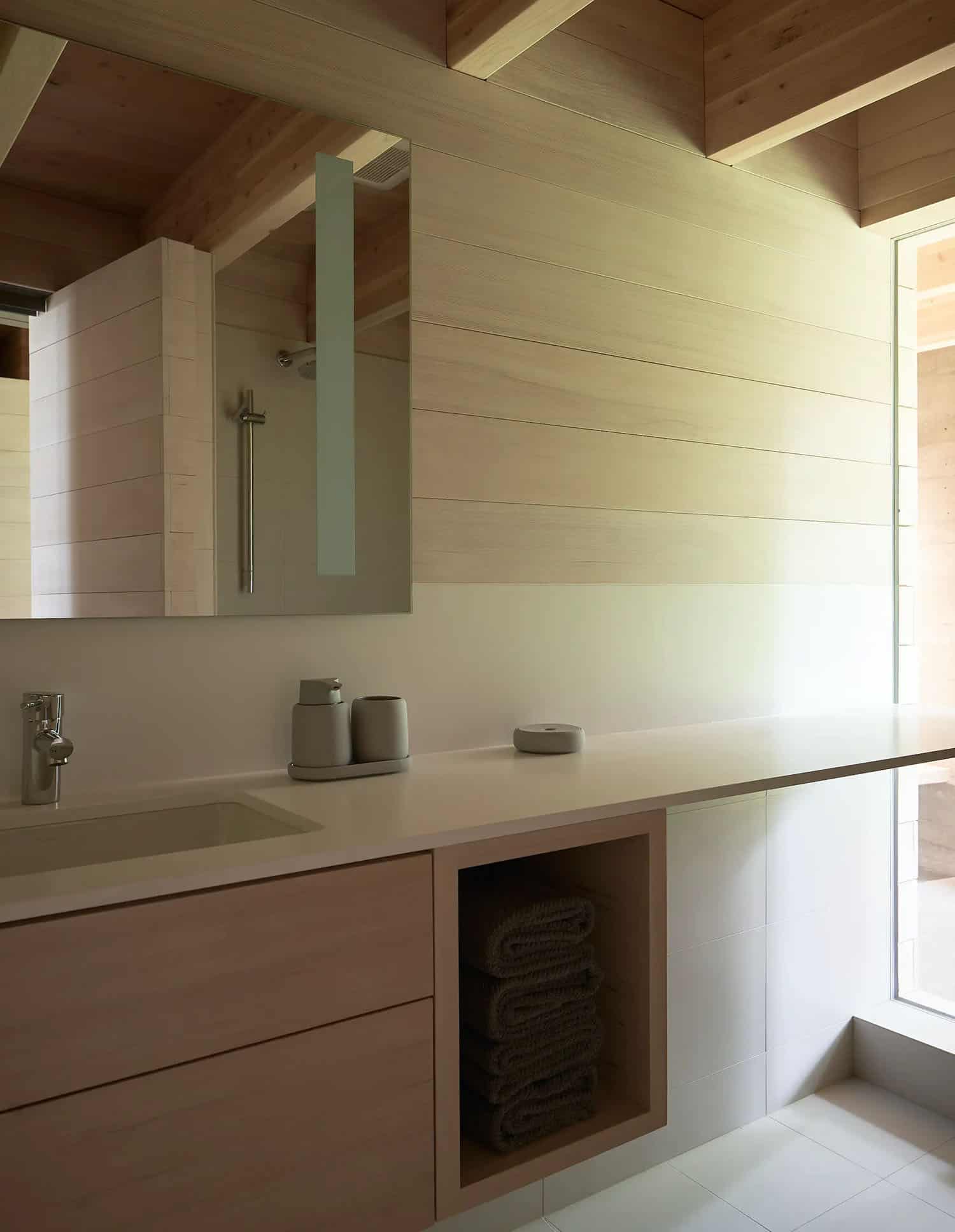
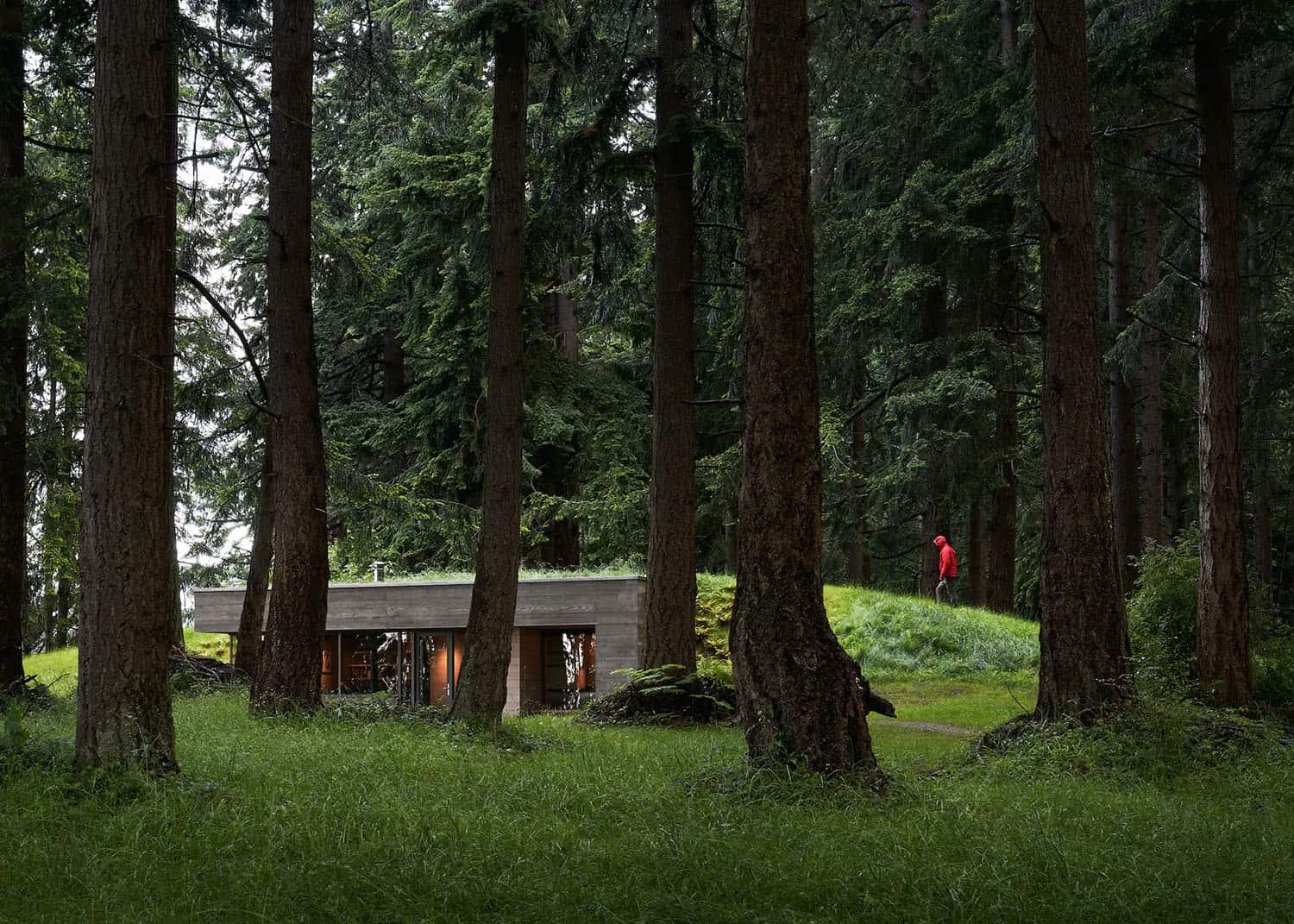

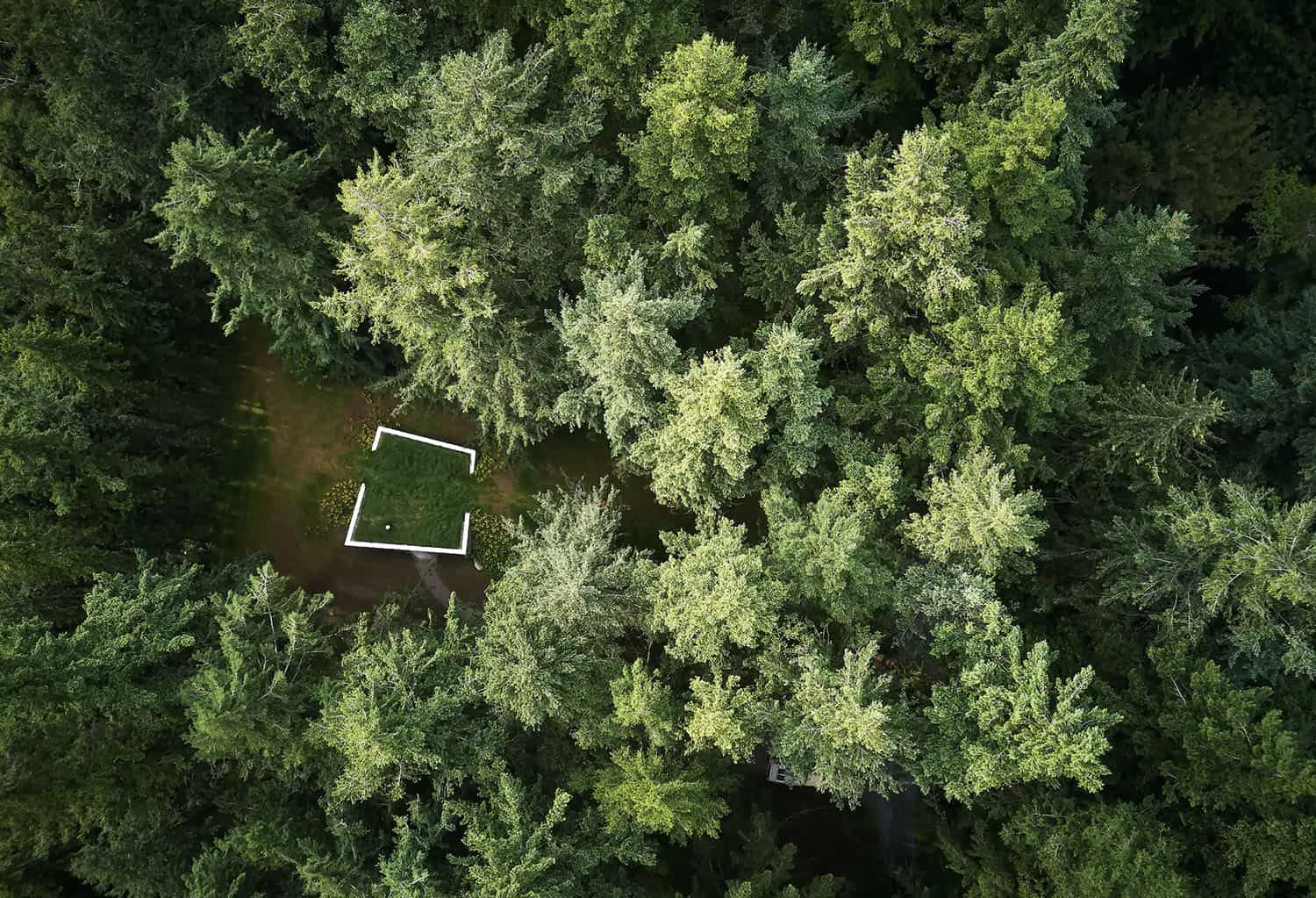
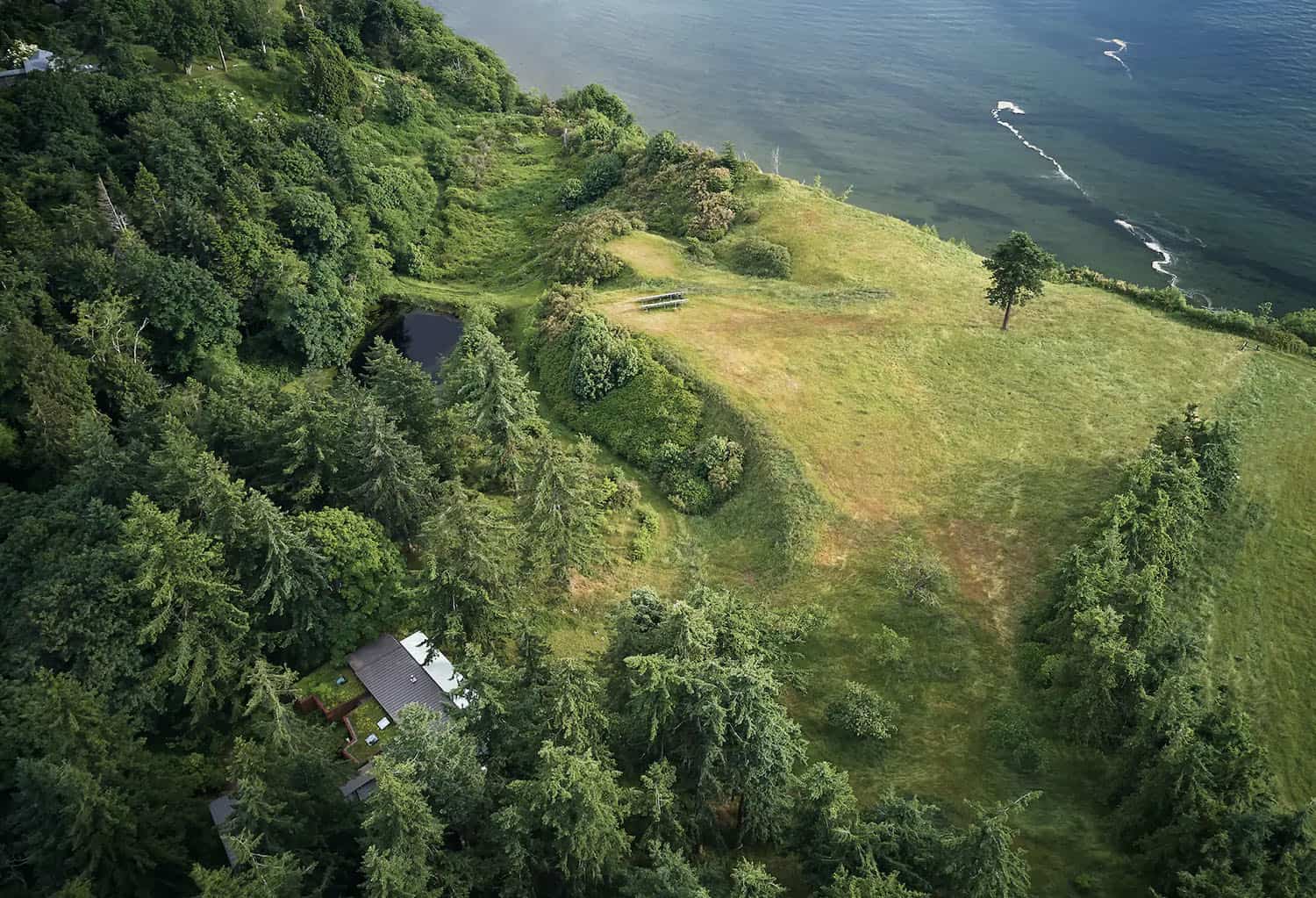
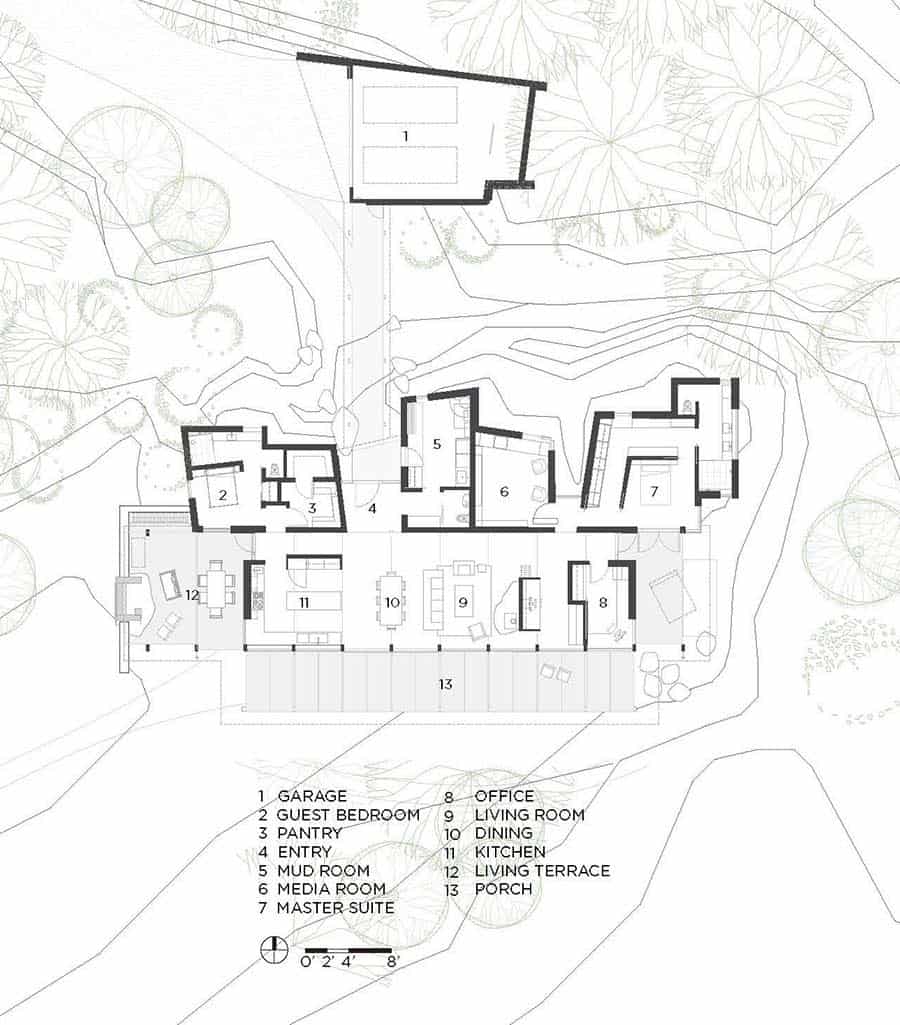
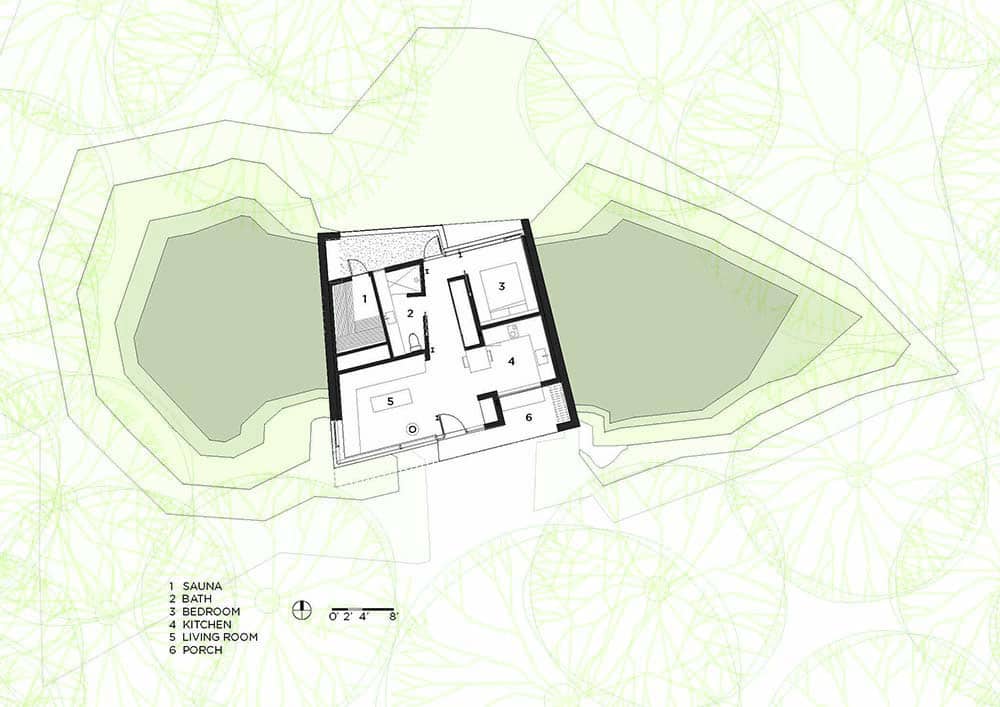
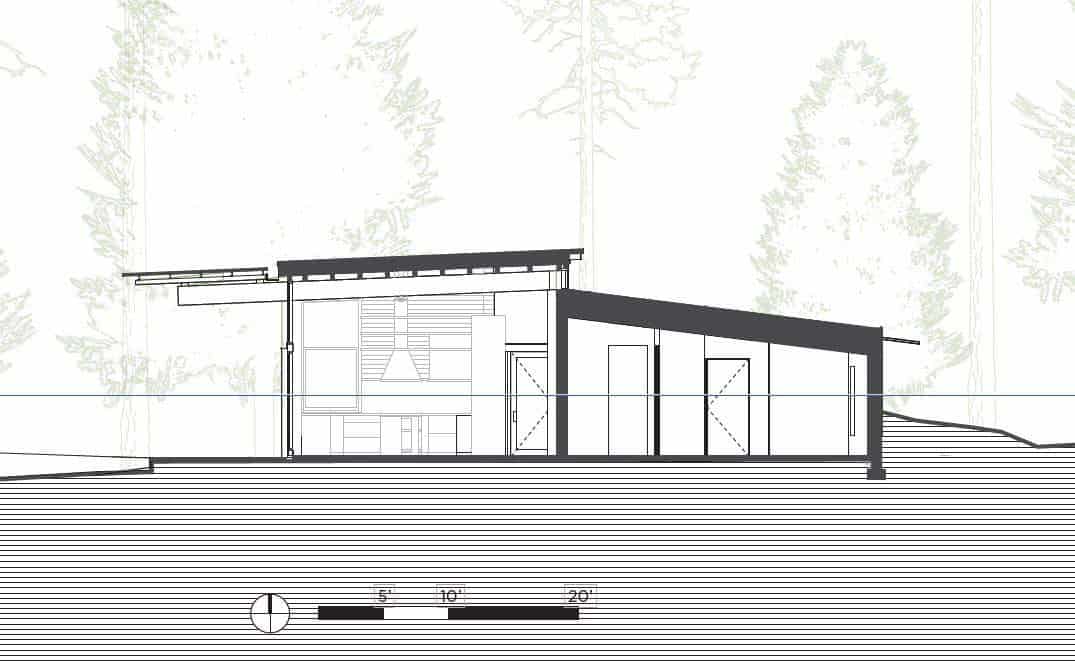


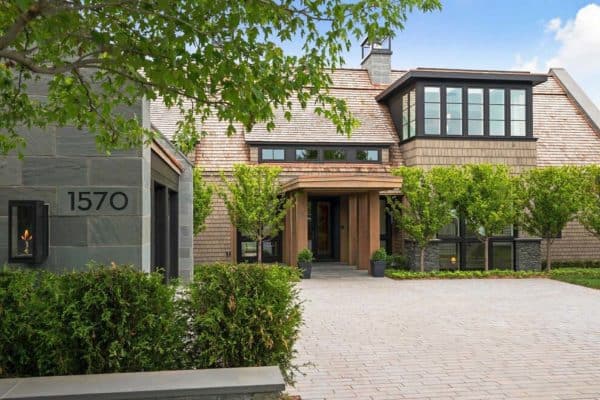
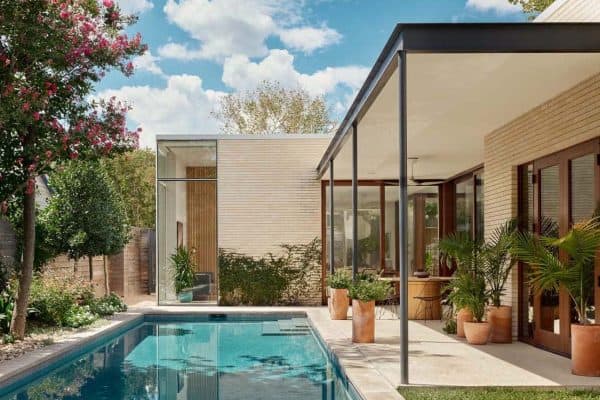
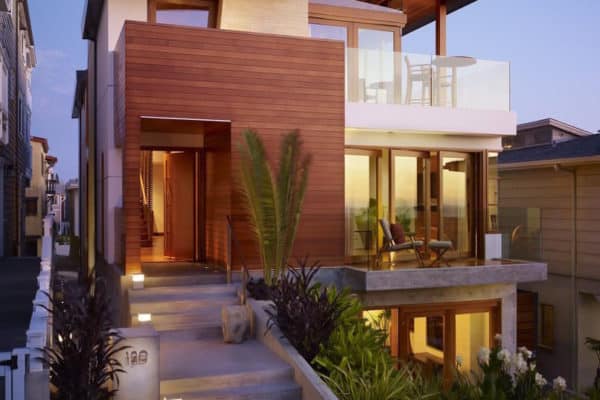


1 comment